🛣️ Outcome-Driven SEO Roadmaps
How to create a roadmap that connects technical SEO strategy with delivery
The SEO Sprint is a fortnightly newsletter that provides tips, guidance and advice on Product and Agile Thinking for SEOs who work with developers.
The email is a touch too long for Gmail, so I would recommend visiting the website.
SEO and product teams suffer from the same problem: Sending lists of feature requests to development teams without a clear vision or purpose.
In the product world, successful product managers use an outcome roadmap framework to develop compelling strategies for the business and development teams to follow.
In this newsletter I wanted to answer the following questions:
What are outcome-driven roadmaps?
What are the benefits of outcome-driven roadmaps?
How can SEOs create outcome-driven roadmaps?
How do outcome roadmaps connect strategy with delivery?
I hope this newsletter sparks ideas on how to tweak your own approach to getting recommendations implemented.
🛣️What is an outcome-driven roadmap?
An outcome-driven roadmap is defined as:
A roadmap connects the customer/business problems that need to be solved to the opportunities that will help solve them.
For example, the following outcome-driven roadmap is a snippet of the New York Health Exchange roadmap…
…and another one from Netflix.
These roadmaps focus not on a “list of tactics” but instead focus on changing customer behaviour in a positive and measurable way that aligns with business goals.
The release plan is not the measure of success, customer behaviour is.
What are the benefits of an outcome roadmap?
The benefits of an outcome-driven roadmap are:
Vision: A clear and compelling strategy for the business to follow.
Buy-in: Aligns with business goals to achieve growth and can be measured.
Measurable Outcomes: Shipping is measured based on changing behaviour in a positive way that aligns with the company goals.
Focus on value: The roadmap makes sure teams are working on high-value projects.
Communicate: A communication device to align business and technical stakeholders.
As well as providing a clear vision and strategy for teams to follow, these decision-making frameworks help connect the product strategy to a release plan.
This helps provide context for development teams working on lists of feature requests and help internal teams understand why they are doing what they are doing.
🚧Constructing Your Own Outcome Roadmap
Now, let’s apply what we’ve learned and create our own outcome SEO roadmap.
1)📊Understand the business
The most important step in developing an outcome-driven roadmap.
It’s important to make sure that before any roadmap is created you understand:
Business context: The wider business vision and strategy.
Strategies: The key team leaders and team strategies.
Goals: The north star goals/metrics that the business cares about.
Personas: The group of users the business wants to target.
If you don’t spend time understanding the marketing, product or development strategy or the metrics that the business cares about then no matter the roadmap it will hit roadblocks.
Tom Critchlow and the SEO MBA newsletter and course do an amazing job of teaching SEO Executive Presence. A great place to start if you want to improve in this area.
2)📏Identify outcomes
Next, you need to think about the outcomes or problems that need to be solved.
I’ve written in-depth about outcomes vs outputs in SEO if you want to learn more about outcomes in SEO.
The definition of an outcome is:
“An outcome is a change in user or customer behaviour that drives business results.”
- Joshua Seiden, Outcomes over Outputs
An outcome has nothing to do with releasing code, publishing a piece of content or building a link. Those are all outputs.
An outcome isn’t about “driving SEO traffic” (see bellow about metrics vs signals).
Instead, think of an outcome as a way to measure success based on positive user or customer behaviour. It’s what you want customers to do to drive business results. For example:
A user visits a substack newsletter site and signs up for the newsletter
A user visits an ecommerce website and buys a product
A customer visits a comparison website, compares and buys insurance
How do you identify these positive user behaviours for any SEO project?
I usually create a very simple User Journey Map in Miro to identify the Outcomes, Signals and Metrics I need to track (see Goals-Signals-Metrics process below).
I also start any project with a simple 1-pager Product Require Document.
Product teams have moved away from writing detailed or long documentation for new features. Many successful product managers now just start with a 1-page document that keeps you focused on solving the core problem.
There is a very good Mind the Product blog post and a PDR template generator I recommend testing (scroll to the bottom) but remember to keep it simple.
3)🧾Identify opportunities
An opportunity is defined as:
A pain point that when addressed will result in the desired outcome. Any opportunity should be measurable once implemented so you can measure the success of a release.
In the SEO community opportunities are found through:
Technical audits
Content audits
Keyword research
SEO Twitter, etc.
The truth is that there are countless SEO auditing and framework documents on the web, all designed to highlight opportunities.
The below articles are some of the best places to start if you want to learn more about how to spot SEO opportunities:
The Agile SEO Framework: Building a Continuous Improvement Machine for SEO by Tory GraySam Torres
How to Conduct, Structure and Communicate Technical SEO Audits by Izzy Wisniewska
Unleash your faceted navigation by Andy Chadwick
4)🏘️Group opportunities into relevant initiatives
Now, it is time to group opportunities into SEO initiatives.
An initiative is defined as:
A clear direction for the list of opportunities/outputs being requested and once completed will help to achieve a measurable outcome that has a positive impact on business goals. They are the main category for tactics or feature lists.
There is no hard or fast rule to group opportunities. I always find it useful to try to group opportunities into:
Page templates (product, category, blog, etc.)
SEO topic (website architecture, internal links, schema.org markup, etc.)
Team ownership (Content team might own editing links vs front-end development team who own page templates)
I use the Opportunity Solution Tree framework in Miro to visualise and roughly connect opportunities/solutions to SEO initiatives…
…which can be used to map to the Opportunity Backlog (Action list) in a Google Sheet that will be presented to the client’s team.
There is an extremely detailed and useful blog post from Teresa Torres on how to use the Opportunity Solution Tree framework.
Quick Tip: I always jump between these steps when grouping opportunities into initiatives:
Identifying outcomes
Identifying opportunities/solutions, and
Grouping opportunities/solutions into SEO initiatives.
I do this until I’ve got a clear visual representation of grouped opportunities by SEO initiatives that will help positively change the user behaviour that will help drive business objectives.
5)🔥Prioritise initiatives and opportunities
Next, it is time to prioritise your initiatives and opportunities.
There are a number of frameworks that product teams use but ICE or RICE are some of the most popular methods.
I use Impact, Confidence and Effort (ICE) in my technical audits opportunity backlog in Google Sheets to prioritise opportunity backlogs:
Let me explain how I calculate Impact, Confidence and Effort scores.
☄️Est. Impact
The impact score is the metric used to roughly estimate how much your solution/opportunity will positively affect the outcome and business goal.
You can use methods like Geometric Mean to calculate the impact of initiatives/opportunities based on SEO case studies as discussed by Andrew Charlton.
You can also connect the impact scores to your forecasting model and help identify which SEO initiatives will help you achieve that forecast.
The skies the limit on how you use the estimated impact score. Just keep in mind the following questions: if the recommendations were to be implemented which would have the biggest impact on the outcome/goal?
😎Confidence
The confidence score is about how sure you are about the impact of the opportunity/initiative. Let’s be honest it can be an anecdotal metric.
The best way to use the confidence score is to base it on supporting evidence.
I like to use Itamar Gilad’s confidence calculator based on published SEO experiments, case studies and my own 10 years of experience implementing SEO strategies.
😣Est. Effort
I always try to align with development teams when providing estimates on opportunities in a backlog. These will only be rough estimates (usually using story points or t-shirt sizes) but it provides a good starting point to have discussions with the development team.
There is no right or wrong way to estimate the important thing is to be consistent with development/product teams estimating.
Remember developing a feasible roadmap is about negotiation and discussion.
Quick Tip: Outcome-driven roadmaps are all about cutting waste.
Please don’t try to overwhelm teams with hundreds of ideas grouped into ten initiatives.
I always try to identify between 3-5 initiatives in a strategy for a team to focus on and I only expect 3-5 oppurtunities within each initiative to be implemented.
Clarity pays when communicating solutions to clients.
6)🎯Goal-Signal-Metric Review
Before, presenting the final roadmap don’t forget to answer the question: How will you know you’ve solved the problem and achieved the business goal?
I use the Goals-Signals-Metrics process from the Google HEART framework to review how I will measure SEO initiatives.
To quickly explain this process:
Goals - The agreed business goal the team is trying to solve (e.g. increase the number of users who buy product X on the US website, etc.).
Signals - The secondary metrics that can be used to judge if the initiatives are a success or a failure (e.g. rankings, indexed pages, validated schema etc.)
Metrics - The clear primary business metrics you’ll be using to judge if the business goals were a success (e.g. SEO traffic, revenue, leads, etc.).
This step is all about making sure I have a clear set of small metrics that can measure the direct or indirect impact of opportunities in the SEO initiatives.
Quick Tip: I add both the signal metrics to the individual opportunities in the Opportunity Solution Tree in Miro to help me keep track of how they can be tested and measured.
This is not presented to non-technical clients (although it can be discussed) but is useful for dev teams who ask questions on how user stories will be tested when released.
7) Present SEO Strategy and Roadmap
Once I’ve mapped out and prioritised the SEO initiatives it is time to present them to the team.
I usually do this using:
Google Slide Deck - Executive summary for non-technical teams.
Google Sheets - A list of prioritised SEO initiatives and opportunities.
The SEO MBA newsletter already does an amazing job at providing advice on how to present an SEO/digital strategy in slide decks (see here and here)…
…however, there are many ways to present your ideas. Below is an example of a technical SEO strategy using a product executive summary style template.
Always test how you present your initiatives to stakeholders, play around with presenting your executive summary. See what works.
🏗️How Outcome Roadmaps Connect Strategy with Delivery
From my experience technical SEO strategies that use this framework are usually:
Already broken down: Initiatives and opportunities are already broken down into smaller chunks that can be easily turned into epics and user stories.
Prioritised: The roadmap contains a prioritised list of hierarchical high-value initiatives and opportunities, making it easier to discuss with development and delivery teams.
Answers the “why”: The roadmap provides a clear explanation of why development teams and other stakeholders are making individual changes.
The SEO initiatives and opportunities that use the outdriven roadmap model is a lot easier to connect to the development and product teams iteration processes.
For example with one client, I work with the development team to turn SEO initiatives and opportunities in the Google Sheet…
…into Epics and user stories in Azure DevOps using the agile iteration process to get SEO tickets released to production.
Using epics and initiatives is a common way for engineering and product teams to connect projects on a roadmap with work in a backlog.
The outcome-driven roadmap framework can help SEO specialists approach development and product teams, and also measure and feedback on the work being completed.
📌 Summary: Outcome-Driven Roadmaps
Outcome-driven roadmaps focus on changing customer behaviour in a positive and measurable way that aligns with business goals.
The list of features is not the measure of success, customer behaviour is. The key things to remember when developing your own is:
Focus on outcomes: Solve measurable problems that have a positive impact on business goals.
Align roadmap with business goals: Understand the business, wider strategies of other teams and the key north star metrics that stakeholders care about.
Prioritise SEO initiatives: For any opportunities, you’ve identified, make sure you group them into SEO initiatives and prioritize them based on impact and effort.
Connect SEO strategy to delivery: Once you’ve got buy-in, work with your development team to break down opportunities into epics and user stories.
🔗Further Reading
Below are three pieces around outcome-driven roadmaps if you want to read further:
Outcome-Based Roadmaps - A blog post from Denver Startup Week this year (2019) that explains product outcome-driven roadmaps.
Confessions of a former Feature Factory PM - A great blog post from a PM who transitioned from output roadmap to outcome roadmaps.
Outcome-driven product roadmap - Another great blog post from a PM who breaks down how she creates her outcome-driven roadmaps.
What is an SEO product manager - I have written a detailed newsletter on the job of an SEO PM.
That's it! What's your experience creating roadmaps to get recommendations implemented?
Let me know in the comments 👇 or on Twitter!



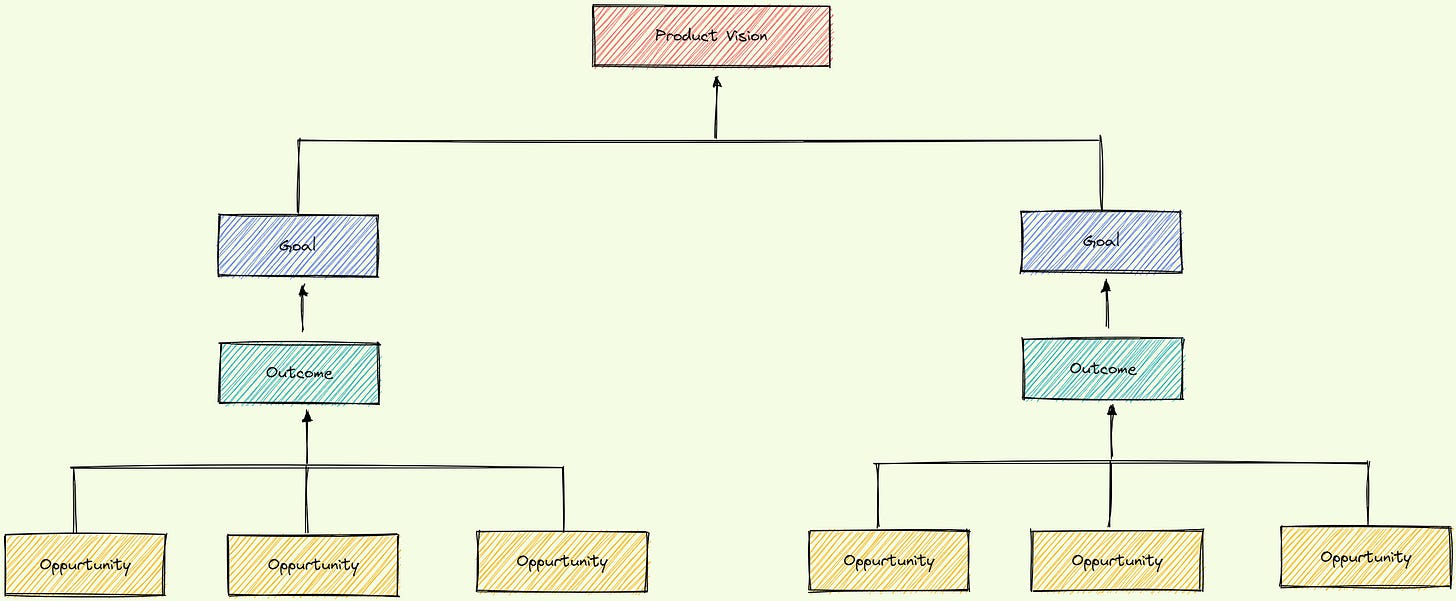

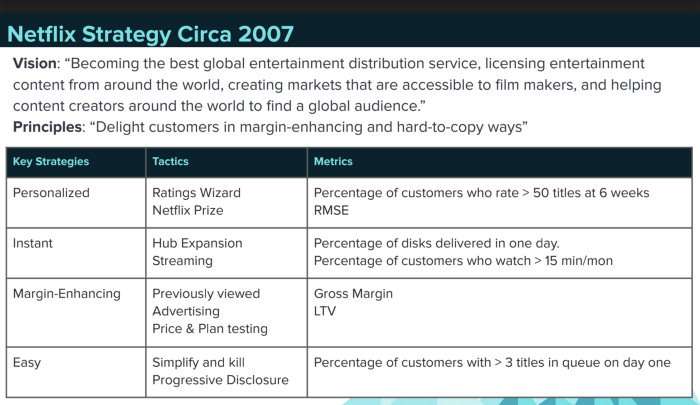
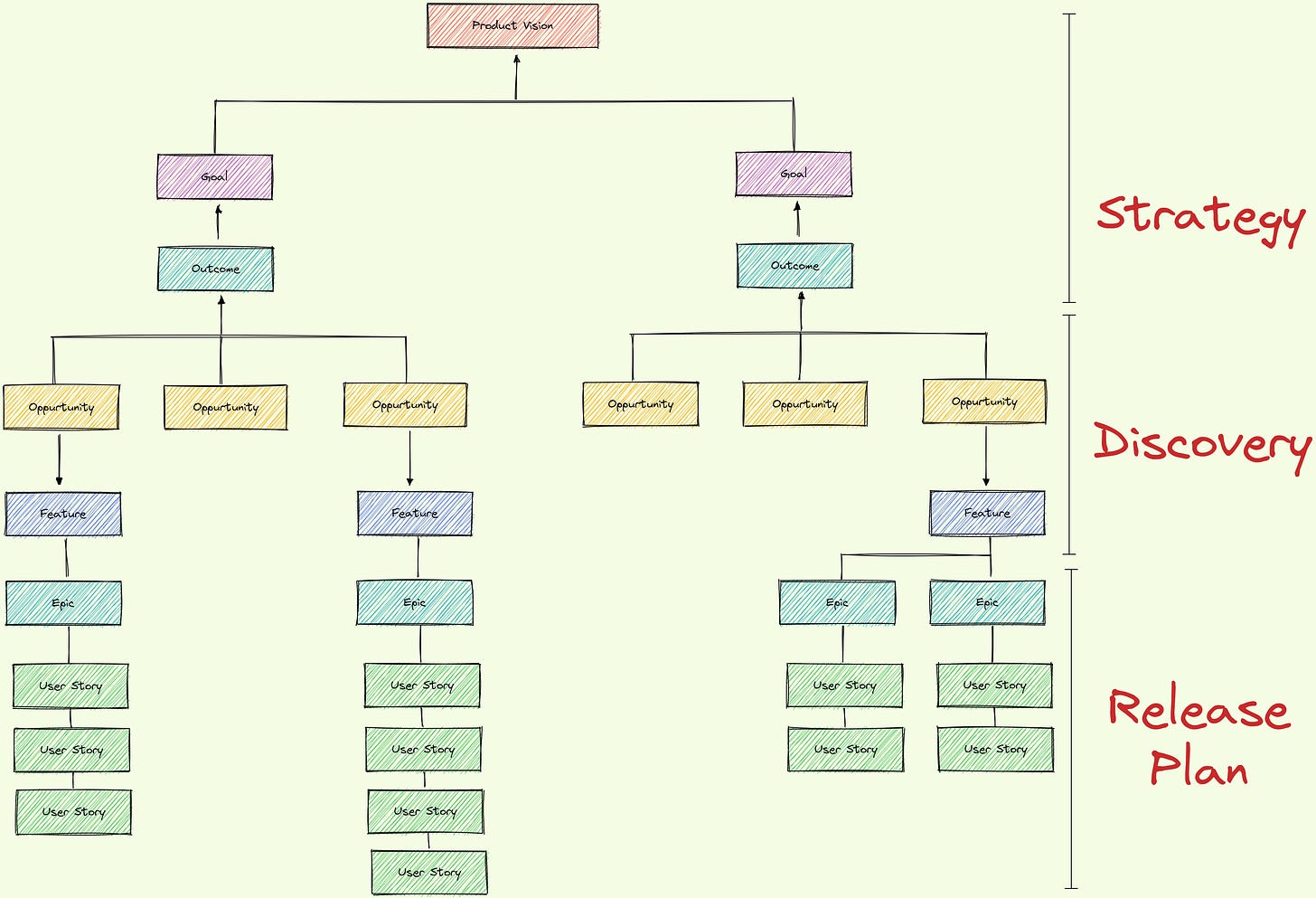


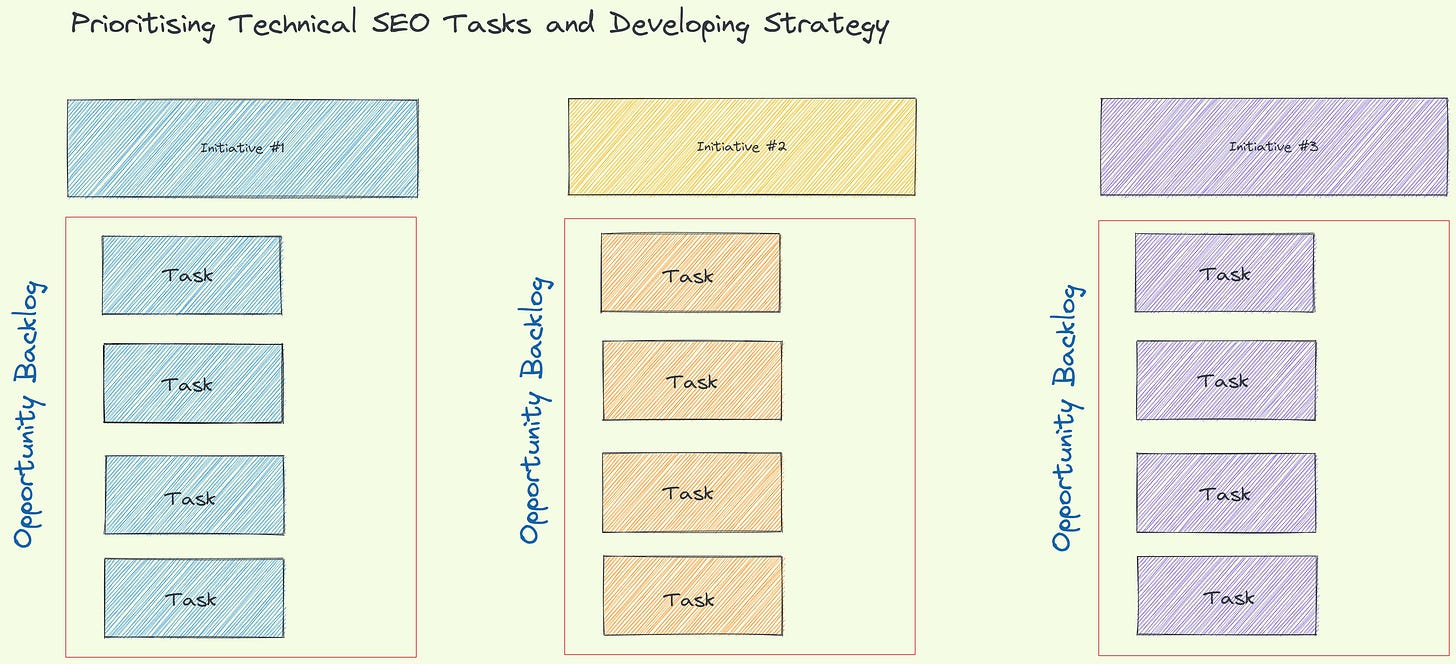
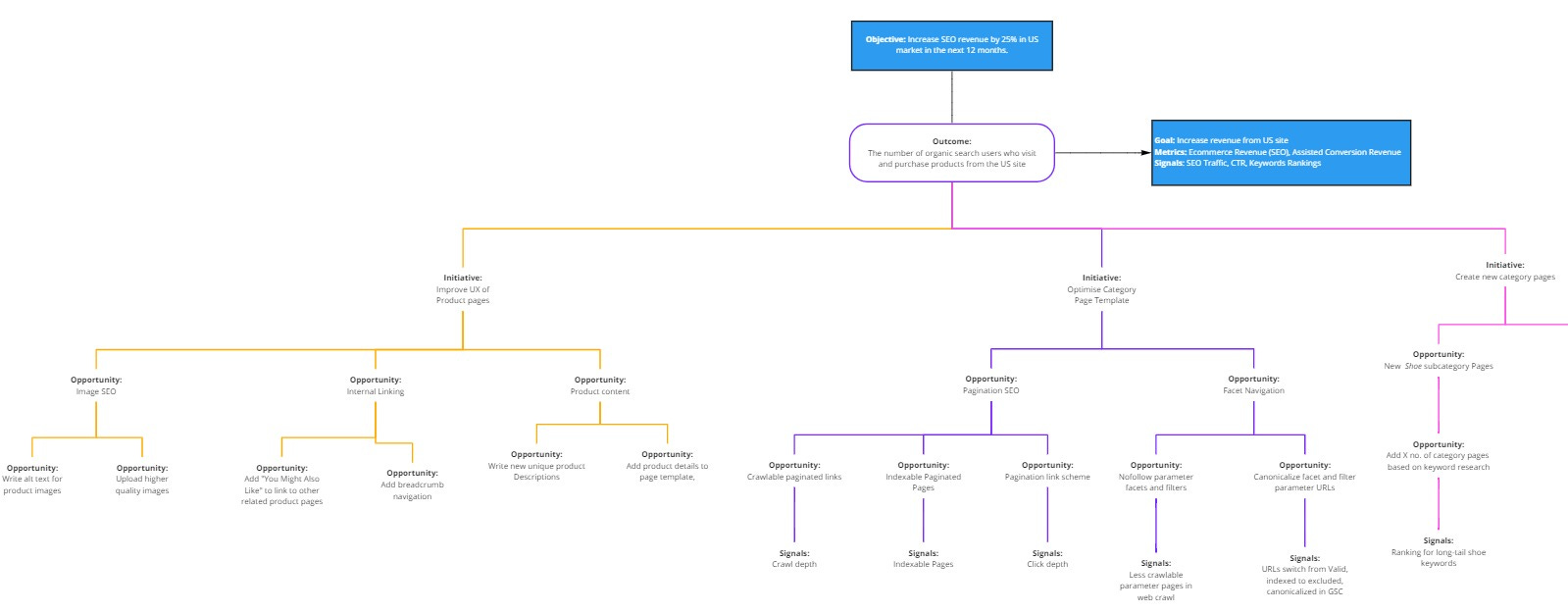
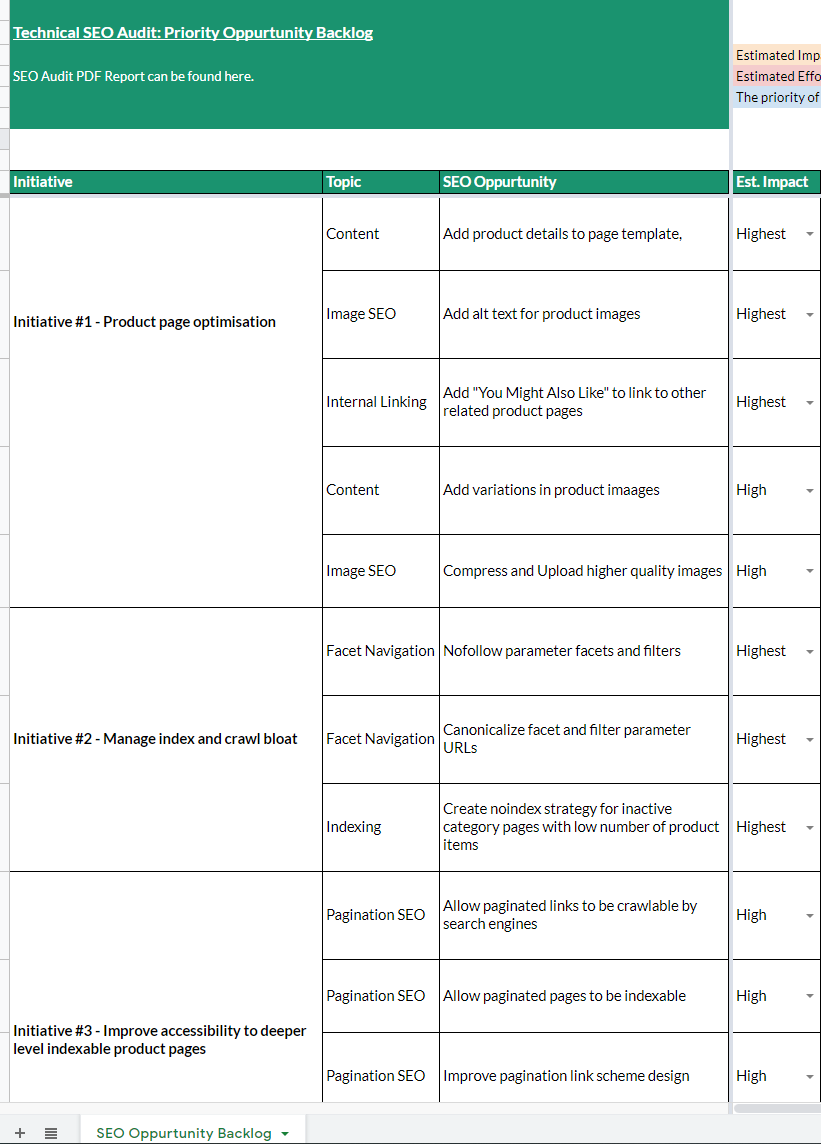
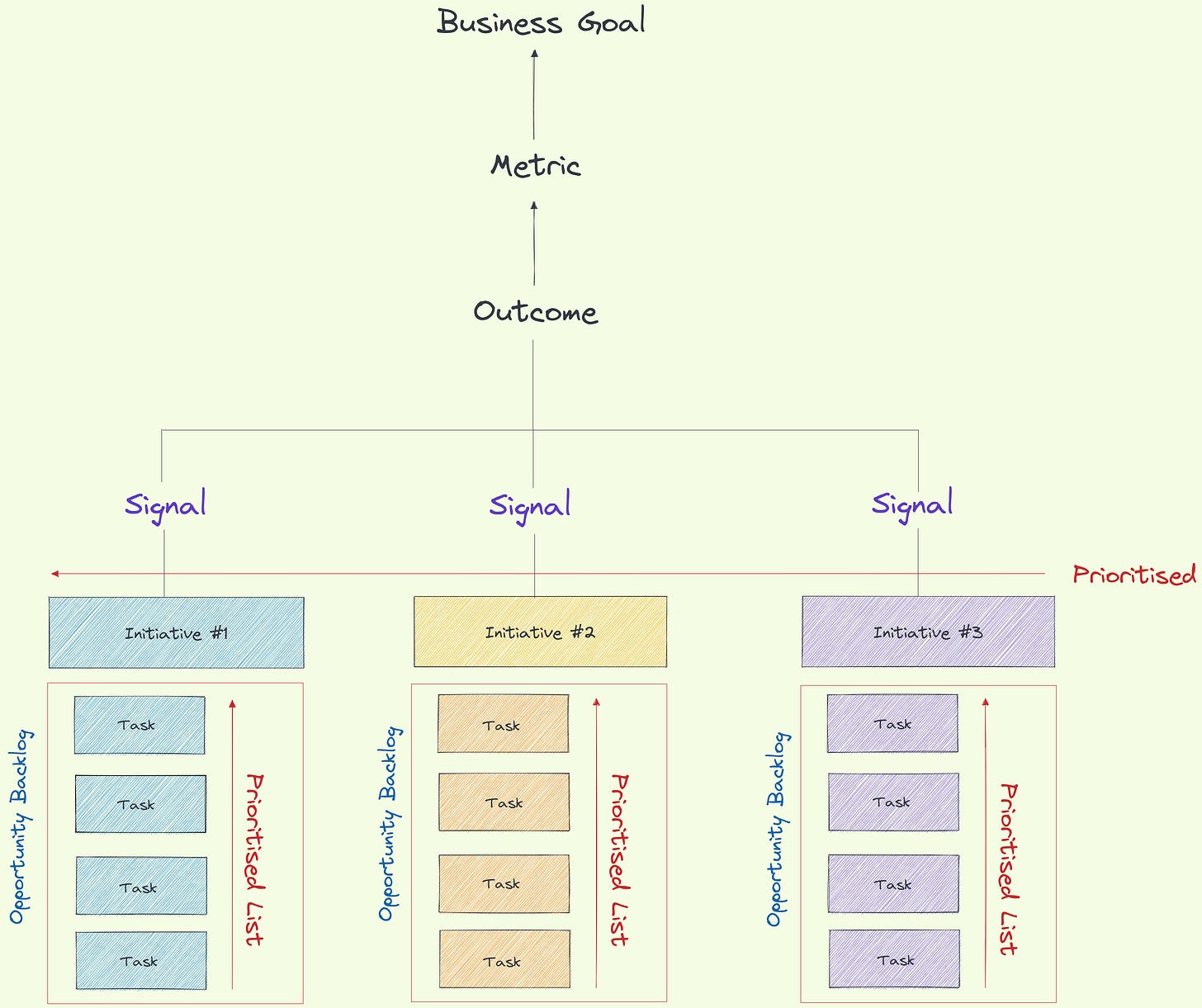
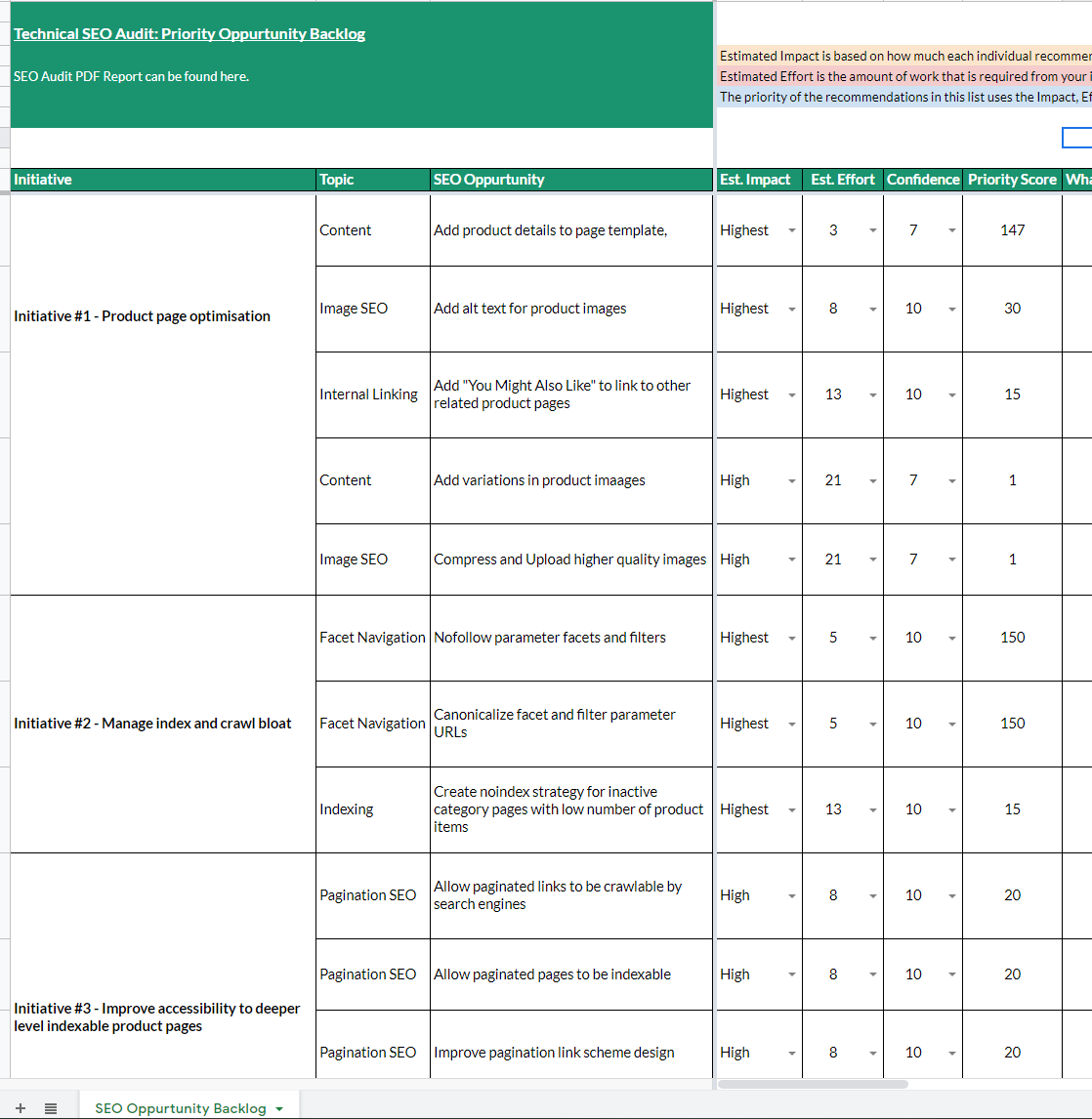
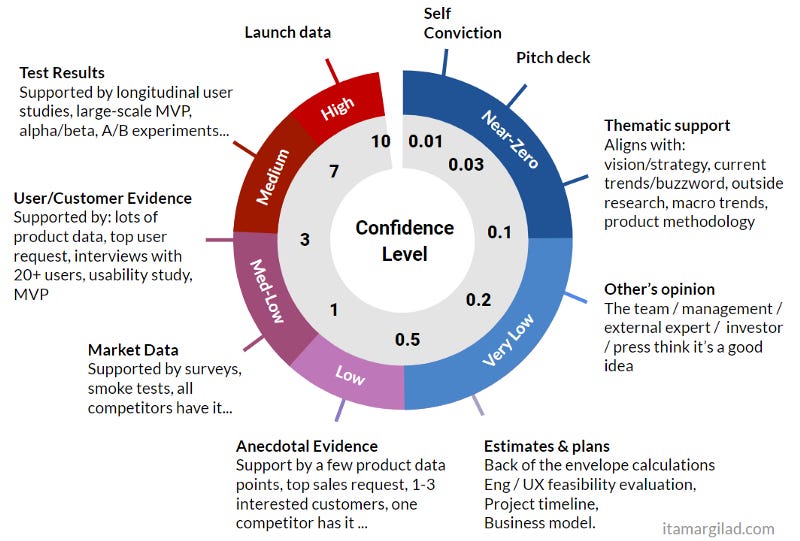
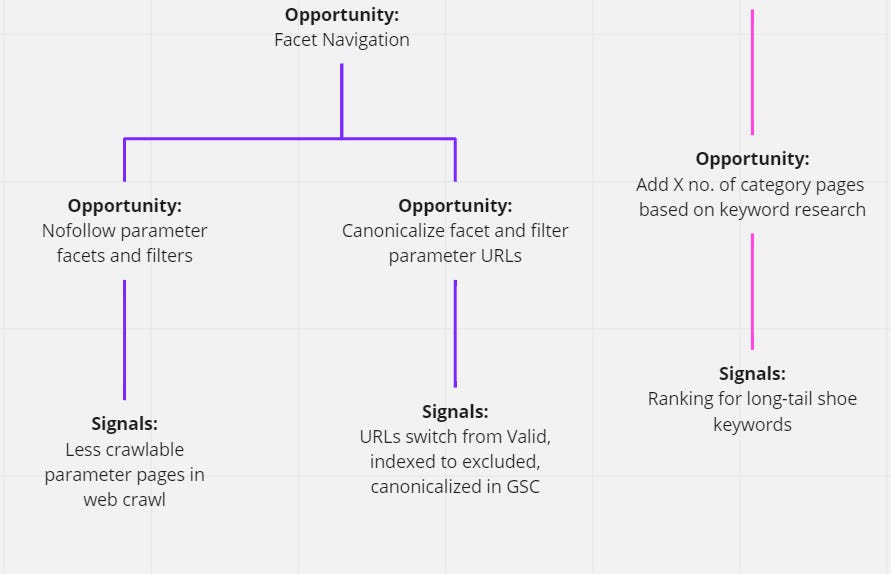
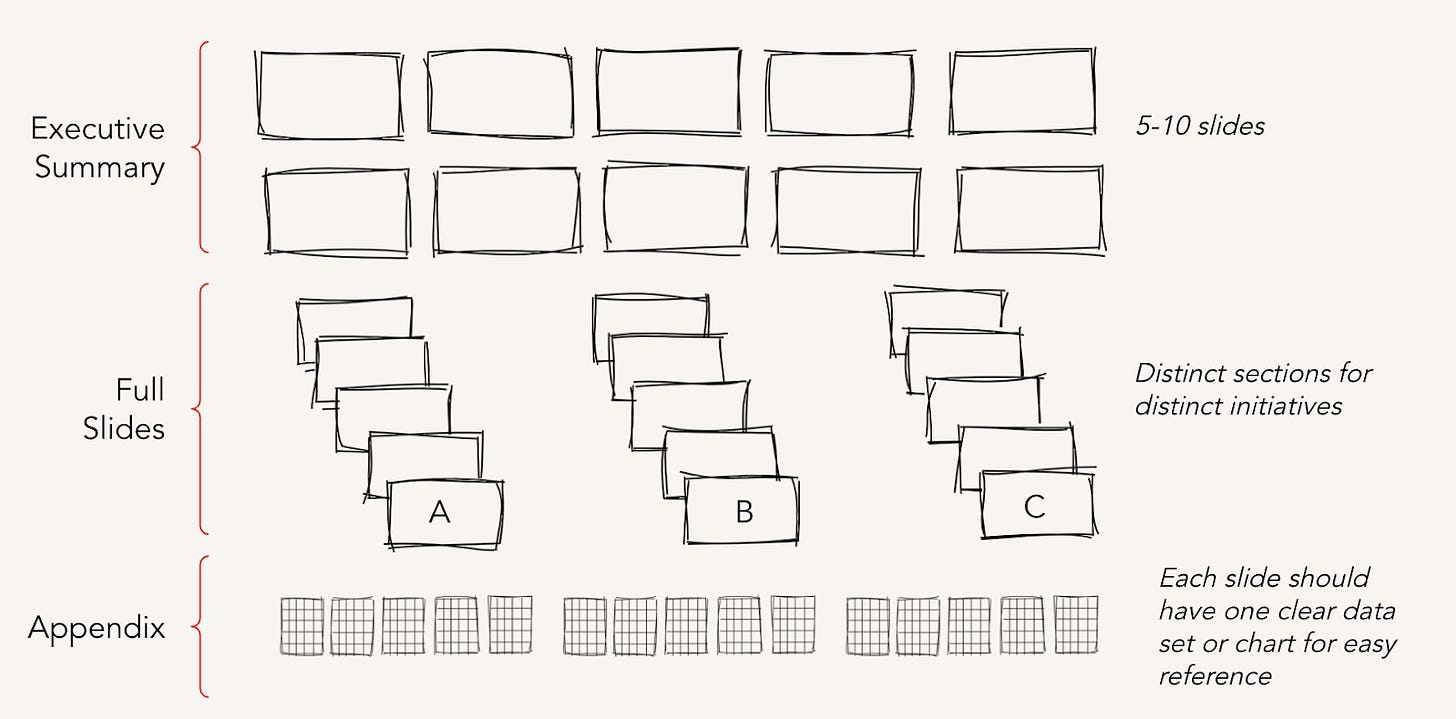

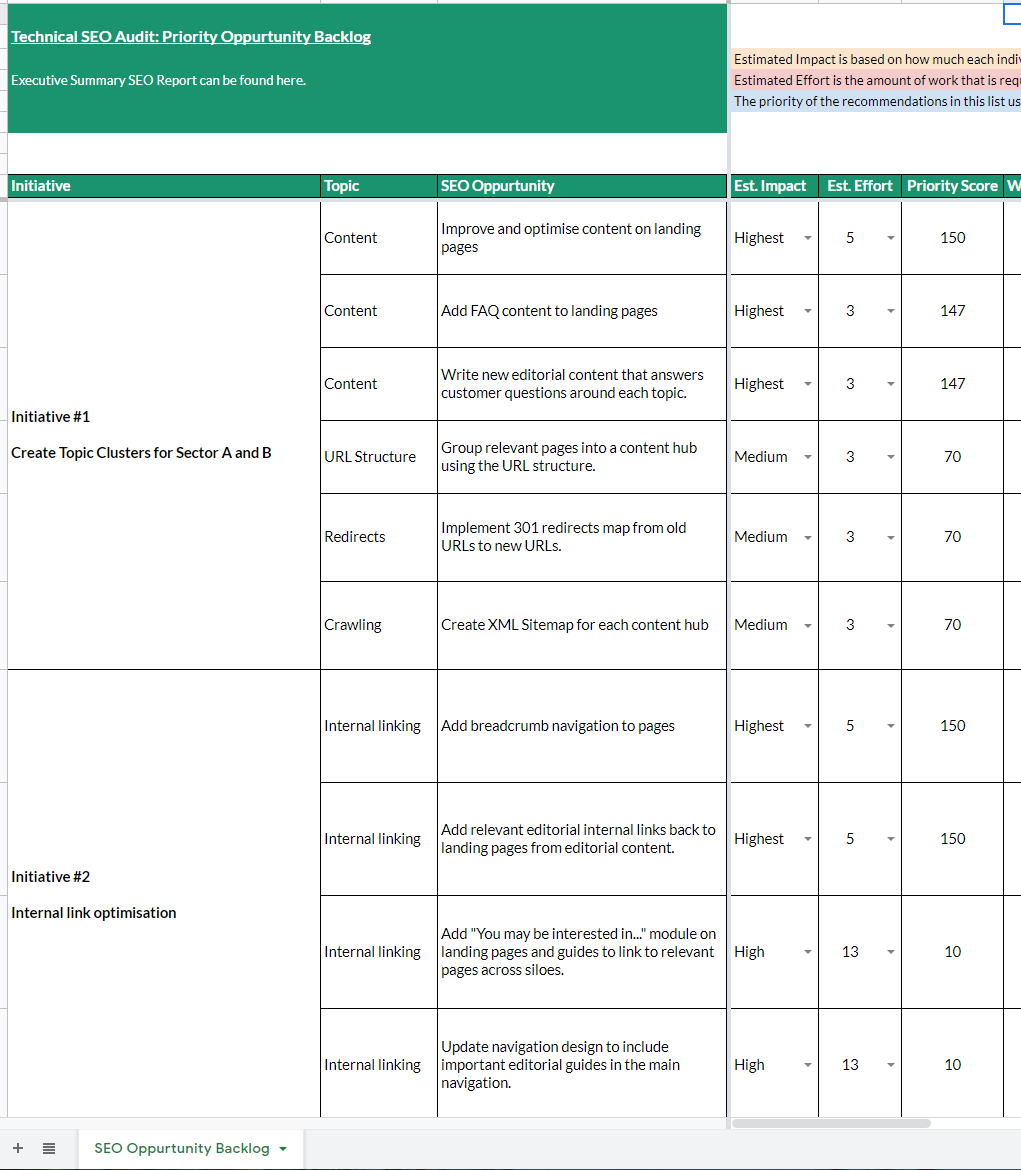

Great article, a gem!
That was awesome, thank you Adam.